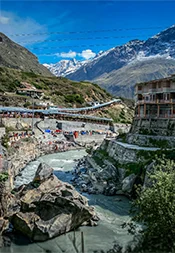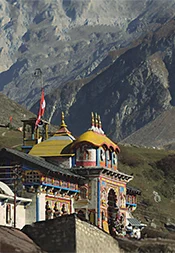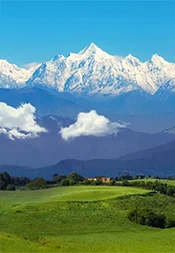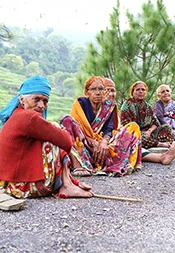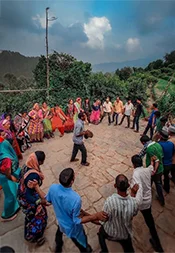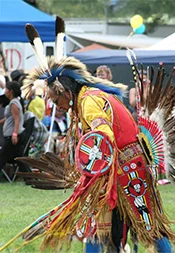Uttarakhand People
Human settlement in this part of the Central Himalayas is as old as the fossils related to Ramapithecus and Shivapithecus, which were discovered in the Shiwalik ranges.
There are also cave paintings in sites like Lakhudiyar Caves (Almora) which give evidence of early humans who had settled in this part of the continent thousands of years ago. Archaeological excavations have found stones dating back to the stone age era at a depth as low as 23ft. below the ground at Bahadrabad (Haridwar).
Rich vegetation and mild climate of the valleys have attracted a number of (pre) historic ethnic groups and races to the valleys and rivers, so much that the socio cultural aspect of Uttarakhand can never be classified homogenous.
Coming back to the present age, Uttarakhand is a lively state consisting of people from various racial groups ranging from Aryans, Mongolians to Austro-Asiatics. According to census 2011, Hindu population forms the religious majority in the state, followed by Muslims, Sikhs, Christians, Buddhists and other religions. Garhwal population accounts for 59.08% of the total population whereas Kumaon population adds the remaining 40.92% to the state.
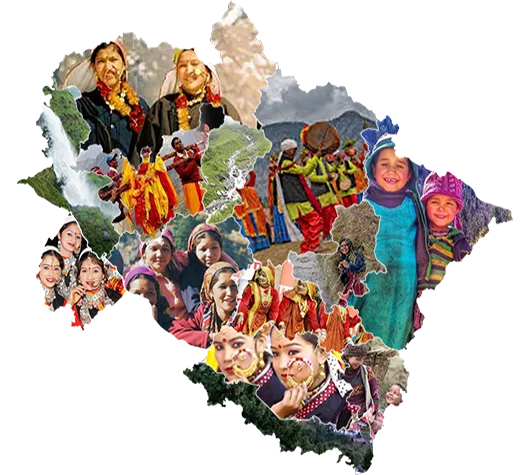
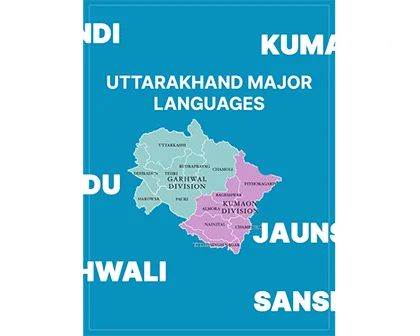
Primary Languages
Primary language of the state is Hindi and secondary is Sanskrit.
Garhwali, Kumaoni and Jaunsari are technically not considered languages and thus, seen as variants of Hindi language.
Tribal Culture
Tribal people in Uttarakhand have been the earliest settlers in the state. Prominent tribes which inhabit this hilly state are "Bhotia tribe, Buksa tribe, Tharu tribe, Jaunsari tribe and the Banrawats or Raji tribe". (Tharu, Buksa, Raji and Bhotiyas can be found in the Kumaon region, whereas Jaunsaris are mostly concentrated in Garhwal region.)
Jaunsaris are the largest tribal group population wise inhabiting the Jaunsar-Bhabar region of Garhwal. They’re a mix of tribes namely Khasas, Kolta and Luhar i.e. mostly artisan classes engaged in activities like craftsmanship and agriculture. Their protector deity is Mahasu Devta. They consider themselves as the ancestors of Pandavas. Buksas claim they’re related to (Patwar) Rajput community. Mostly concentrated in the Udham Singh Nagar (Ramnagar, Kashipur, Gadarpur and Bajpur), Nainital and Dehradun districts they speak hindi. First recorded reference on them can be found in Ain-i-Akbari. According to Amir Hasan, there were groups living in Buksar who used to consume all kinds of meats, because of which they were named Bhaksi, which gradually changed to Buksa. They celebrate the festival of Holi with much fanfare. They are mostly skilled in weaving and craftsmanship.
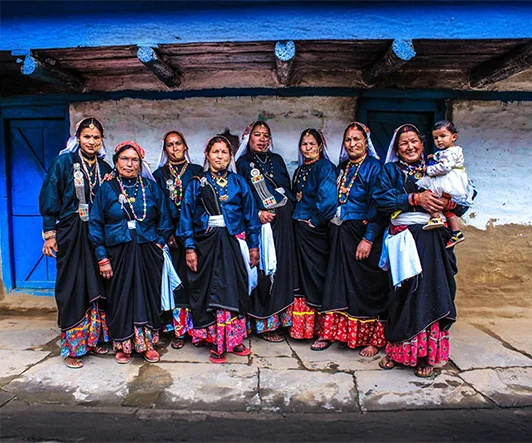

Some More Communities
Tharu community can be found on both sides of the India-Nepal border. In India, their populace is living in five districts, namely Udham Singh Nagar (Uttarakhand), Lakhimpur Kheri, Gonda, Gorakhpur and Bahraich (Uttar Pradesh). Though the community people claim a Rajput ancestry going back to Rajasthan, they have facial features which identify as Mongoloids. They are mostly engaged in agricultural activities and animal husbandry. They are believers of various deities, sacrifices and witchcraft. Their language has an influence of both Hindi and Nepali.
Both Tharus and Buksa groups are considered the original inhabitants of the Bhabar belt.
Bhotiyas are ethno-lingustic people found in the upper Himalayas section of both Garhwal and Kumaon region, but mostly concentrated in the Pithoragarh district. Literacy wise, they claim the top spot among all the tribes of Uttarakhand, with an 80% literacy rate. Religion wise, the Bhotiya community in Chamoli and Pithoragarh follow Hindu rituals whereas the ones in Uttarkashi are followers of Buddhism. Occupationally, they are a trading community who also engage in animal husbandry.
Raji community in Uttarakhand are also known as Banrawatas and have the status of Primitive Vulnerable Tribal Groups (PVTG). They are the smallest community in the state and engage in activities like hunting and agriculture.



